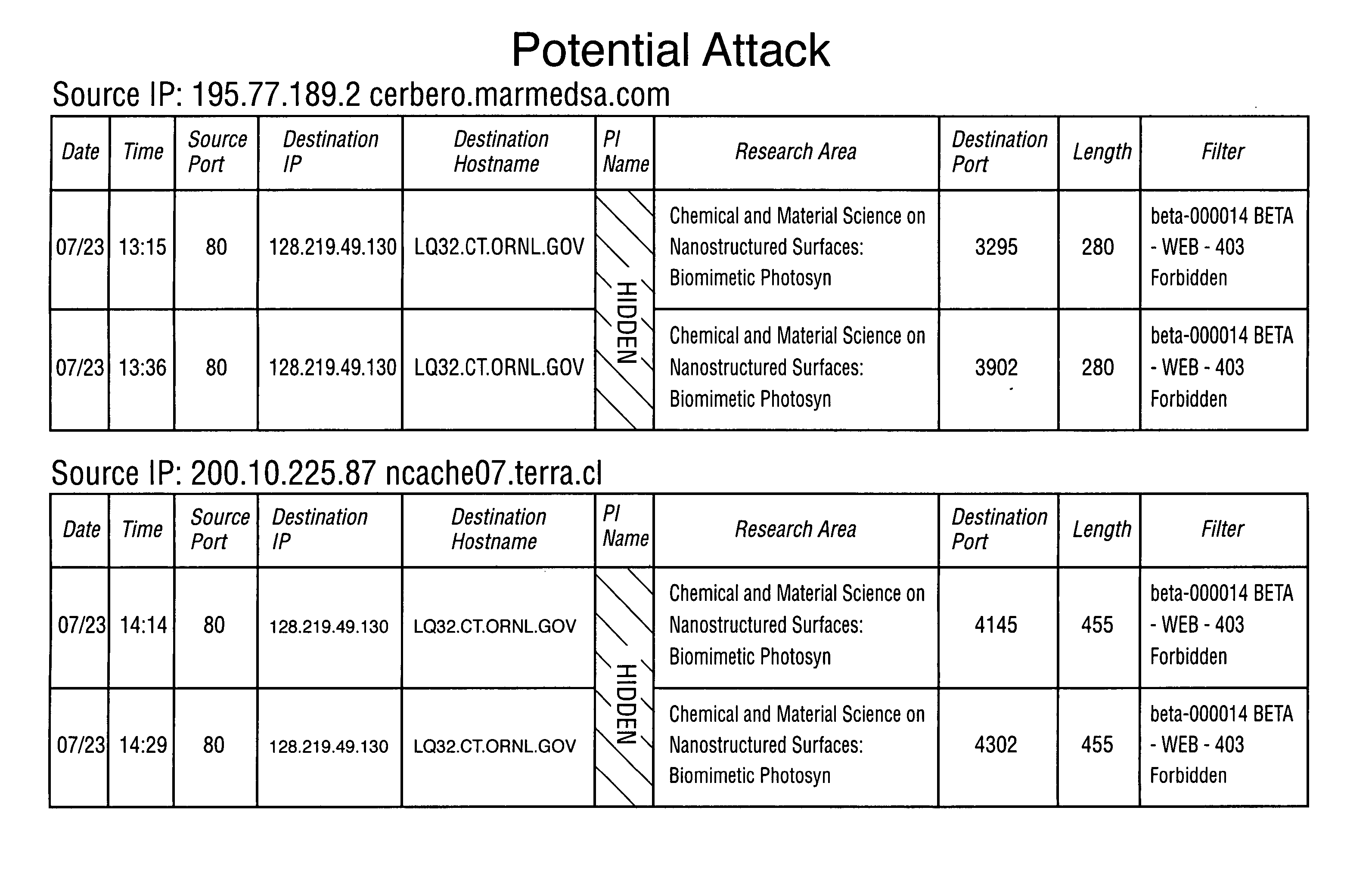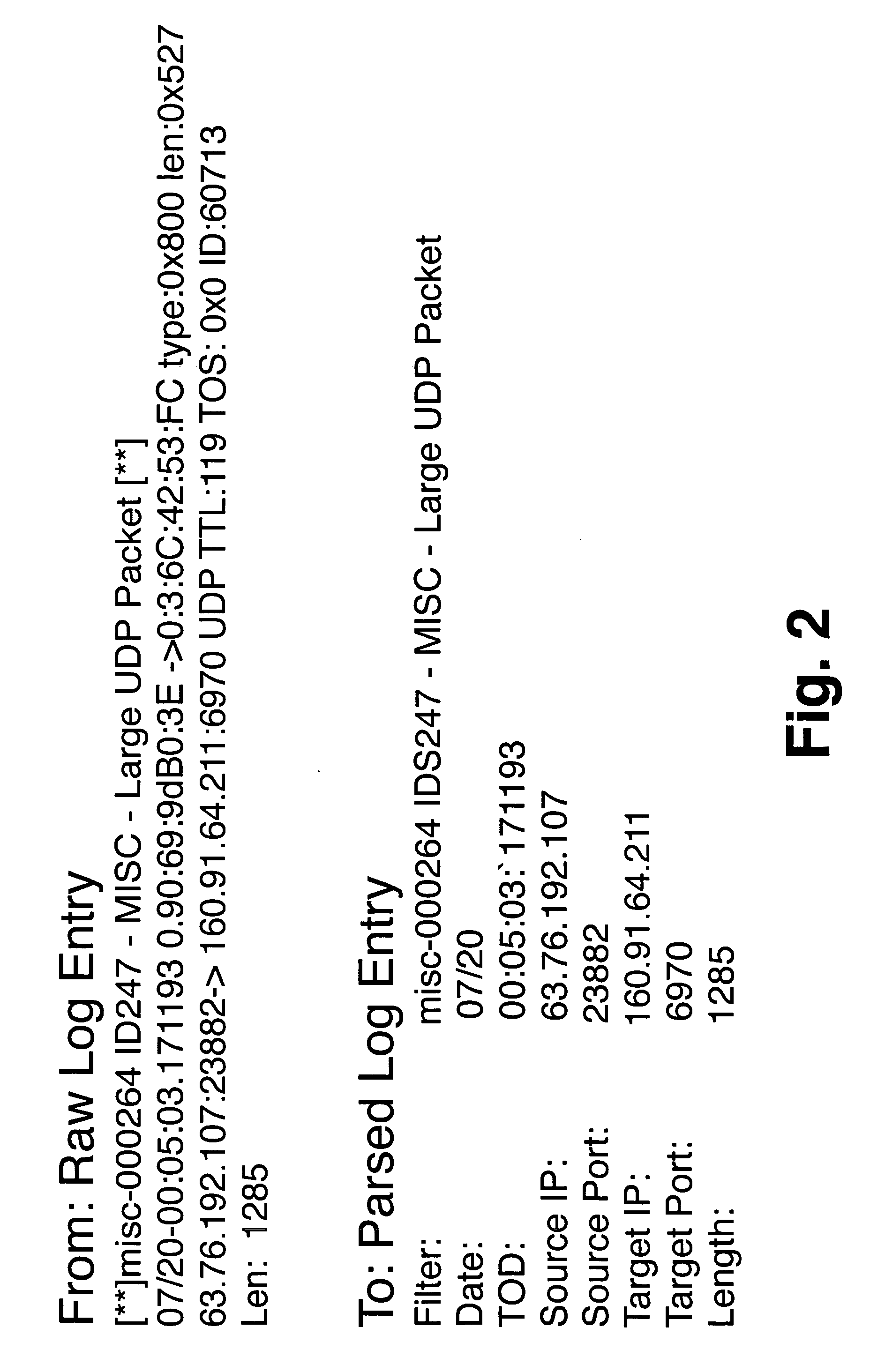Method for detecting sophisticated cyber attacks
a cyber attack and sophisticated technology, applied in the field of sophisticated cyber attacks, can solve the problems of preventing the detection of certain events identified by audit log software, affecting the detection of sensitive information in computer networks, and affecting the detection of sensitive information
- Summary
- Abstract
- Description
- Claims
- Application Information
AI Technical Summary
Problems solved by technology
Method used
Image
Examples
examples
[0056]FIGS. 4 and 5 are computer generated graphs of typical cluster analysis results obtained from Steps 1-8 of the present invention. FIGS. 4 and 5 illustrate the activities of a number of source IPs outside the network. Each dot represents an outside user accessing the network and having some filter triggered. The dots that are closest together are the most similar as determined by Steps 6 through 8.
[0057]FIG. 4 suggests that there may be a sophisticated user who has programmed perhaps 16 different computers to do very similar behaviors. All of the computers show up in FIG. 4 as having very similar patterns. In the case of FIG. 4, there were a total of about 788 source IP's and 800 different people coming in to the network, and the figure shows only the “failed logon” subset of that data.
[0058]FIG. 5 illustrates another “failed logon” that could be someone intentionally trying to hack in to a network. FIG. 5 shows two very long patterns associated with the computers of two scie...
PUM
 Login to View More
Login to View More Abstract
Description
Claims
Application Information
 Login to View More
Login to View More - R&D
- Intellectual Property
- Life Sciences
- Materials
- Tech Scout
- Unparalleled Data Quality
- Higher Quality Content
- 60% Fewer Hallucinations
Browse by: Latest US Patents, China's latest patents, Technical Efficacy Thesaurus, Application Domain, Technology Topic, Popular Technical Reports.
© 2025 PatSnap. All rights reserved.Legal|Privacy policy|Modern Slavery Act Transparency Statement|Sitemap|About US| Contact US: help@patsnap.com



